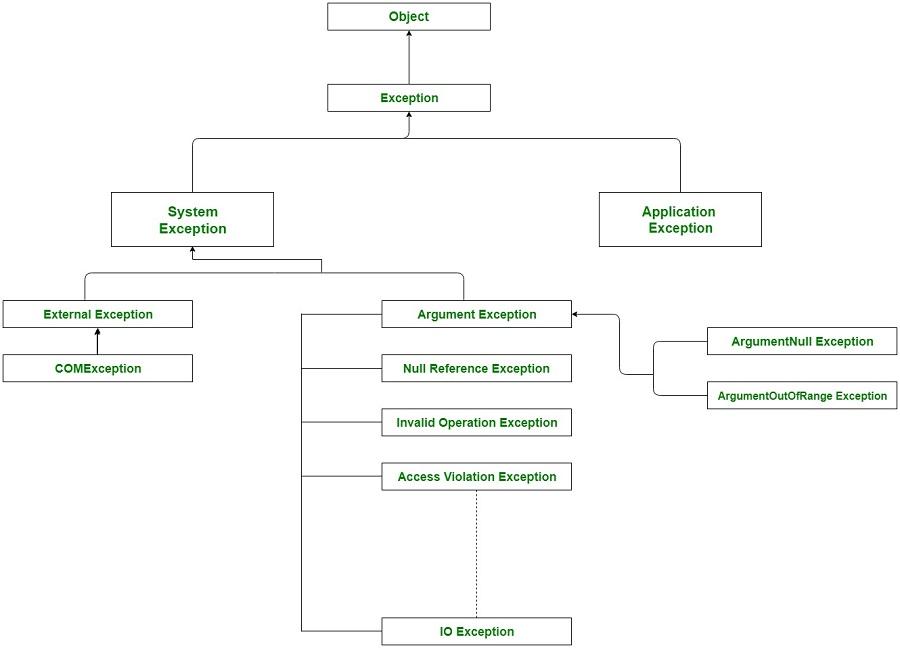In C#, an exception is an unexpected event that occurs during the execution of a program, which disrupts the normal flow of the program. Exceptions can occur due to various reasons such as invalid input, division by zero, file not found, or network issues.
Example:
C# int a = 5, b = 0; int result = a / b; // Throws DivideByZeroException Console.WriteLine(result);
Types of Exceptions in C#
 Types of Exception in C#
Types of Exception in C#Exceptions in C# can be broadly classified into two types:
1. System Exceptions
- These are exceptions thrown by the CLR (Common Language Runtime).
- Examples: DivideByZeroException, NullReferenceException, IndexOutOfRangeException
2. Application Exceptions
- These are custom exceptions defined by the user to indicate application-specific errors.
- Derived from the ApplicationException class.
Examples of Common Exceptions
1. DivideByZeroException
Occurs when a number is divided by zero.
C# int a = 10, b = 0; int result = a / b; // Throws DivideByZeroException
2. NullReferenceException
Occurs when trying to access a member of an object that is null.
C# string str = null; int len = str.Length; // Throws NullReferenceException
3. IndexOutOfRangeException
Occurs when accessing an array element outside its valid range (size of array).
C# int[] arr = { 1, 2, 3 }; int x = arr[5]; // Throws IndexOutOfRangeException 4. Custom Application Exception
You can define your own exceptions by extending ApplicationException.
C# using System; class InvalidAgeException : ApplicationException { public InvalidAgeException(string message) : base(message) { } } class Program { static void CheckAge(int age) { if (age < 18) throw new InvalidAgeException("Age must be 18 or older."); } } Properties of the Exception Class
The Exception class in C# provides several properties to retrieve detailed information about an exception when it occurs:
- Data: Holds arbitrary user-defined information in key-value pairs related to the exception.
- TargetSite: Returns the method where the exception was thrown.
- Message: Provides a description of the cause of the exception.
- HelpLink: Stores a URL pointing to a help file or documentation for the exception.
- StackTrace: Provides the sequence of method calls that led to the exception, helping to locate where the error occurred.
- InnerException: Contains another exception that caused the current exception, allowing tracking of exception chains.
Exception vs Error
| Feature | Exception | Error |
|---|
| Definition | Unexpected condition in program flow | Serious problem that cannot be handled in normal program flow |
| Recoverability | Can be handled or recovered | Usually cannot be handled |
| Occurrence | Happens at runtime | Happens at compile-time or runtime (system-level) |
| Examples | NullReferenceException, DivideByZeroException | StackOverflowError, OutOfMemoryError |
| Purpose | Indicates conditions that can be managed | Indicates serious problems beyond program control |
Key Points
- Exceptions are runtime anomalies, not compile-time errors.
- System exceptions are thrown by the CLR, application exceptions are user-defined.
- Exception properties provide detailed information about the cause and context of the error.
- Unlike errors, exceptions can often be anticipated and managed.
Explore
Introduction
Fundamentals
Control Statements
OOP Concepts
Methods
Arrays
ArrayList
String
Tuple
Indexers
My Profile